By Rick VanSickle
The historic Marynissen Estates Winery in Niagara-on-the-Lake has finally re-released what was once one of the region’s most sought after red wines — the coveted Lot 31 Cabernet Sauvignon.
Note, also in this report: The under-the-radar wines from virtual winemaker Marc Pistor of Fogolar Wines.
Though not called Lot 31 any longer under the current owners, the Zhang family, who bought the winery in 2012, the 2018 vintage of the Marynissen Vineyard Cabernet Sauvignon is 100% sourced from the very estate vineyard John Marynissen planted in 1978.
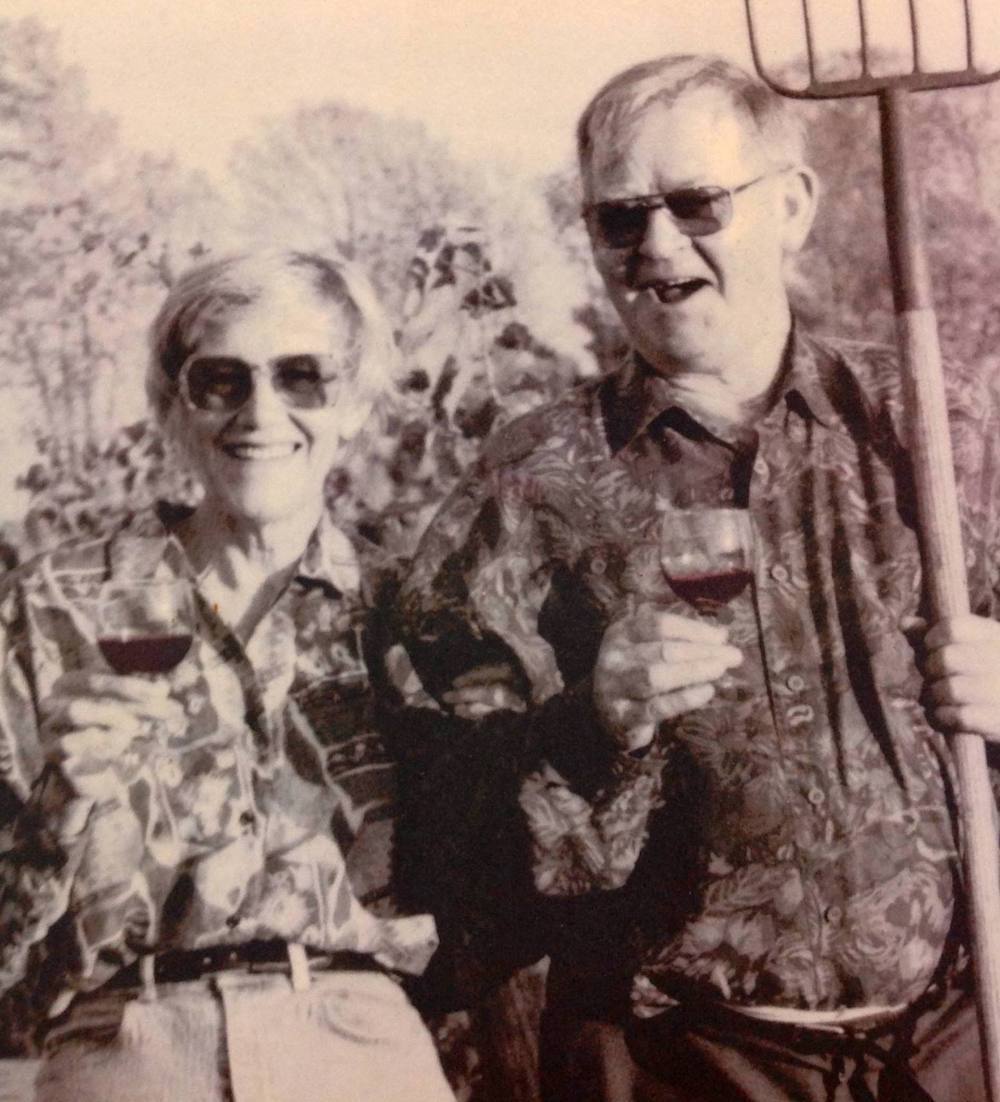
The respected wine pioneer, who passed away in 2009, always pushed the limits of what was perceived to be possible with cool-climate grape growing, and in 1978 he planted Cabernet Sauvignon in what was then the Lot 31 Vineyard, which are the oldest commercial Cabernet Sauvignon vines in Canada and the pride of the vineyard. People who have been enjoying Niagara wines for much longer than I have, swoon at the memory of those Marynissen Cabernets, of which he made in two versions — the first aged in French oak and the second aged in American oak.
Former Marynissen winemaker Jeff Hundertmark told me many years ago that the Lot 31 was “the most inspiring wine” he had tasted way back at its release in the early 90s, “and the first collectible Canadian wine I had in my cellar at the time,” he said. “It was an honour to work in his vineyards and an honour to toil in his cellar. John Marynissen will always be a hero of mine and is missed every day.”
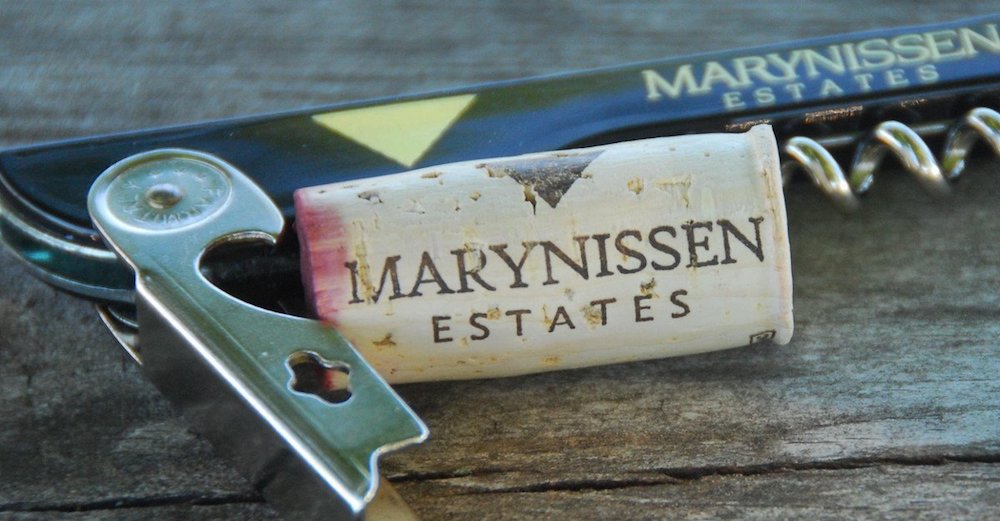
The last bottle of Lot 31 I tasted was a few years ago during a tasting of old Niagara red wines with like-minded wine lovers. It was the Marynissen Cabernet Sauvignon 1991 Lot 31 (American oak aged). The bottle we tried was in pristine condition, no ullage whatsoever. The cork was perfectly sealed and was tight in the bottle. It was an extraordinary example of well-aged Cabernet from Niagara.
Plans change, and unfortunately for the new Marynissen owners, there was no way to predict what was coming in 2014 and 2015 when back-to-back polar vortexes laid waste to vineyards all over Niagara. Marynissen was not spared. It was a horrible disaster for the new owners to grapple with, coupled with winemaker Hundertmark leaving the winery for Stoney Ridge in 2013 (now head of winemaking at Mt. Boucherie and Rust wineries in B.C.).
The new owners replanted a sizeable portion of the property. “We pulled out older Chard vines that were inflicted with virus and replanted blocks killed from cold,” said winemaker Mitchell McCurdy, below, in a Q&A with Wines In Niagara recently. “Syrah, Riesling, and Gamay all unfortunately died in the 2013 and 2014 winters, but we have since replanted with Cabernet Franc and Cabernet Sauvignon.”
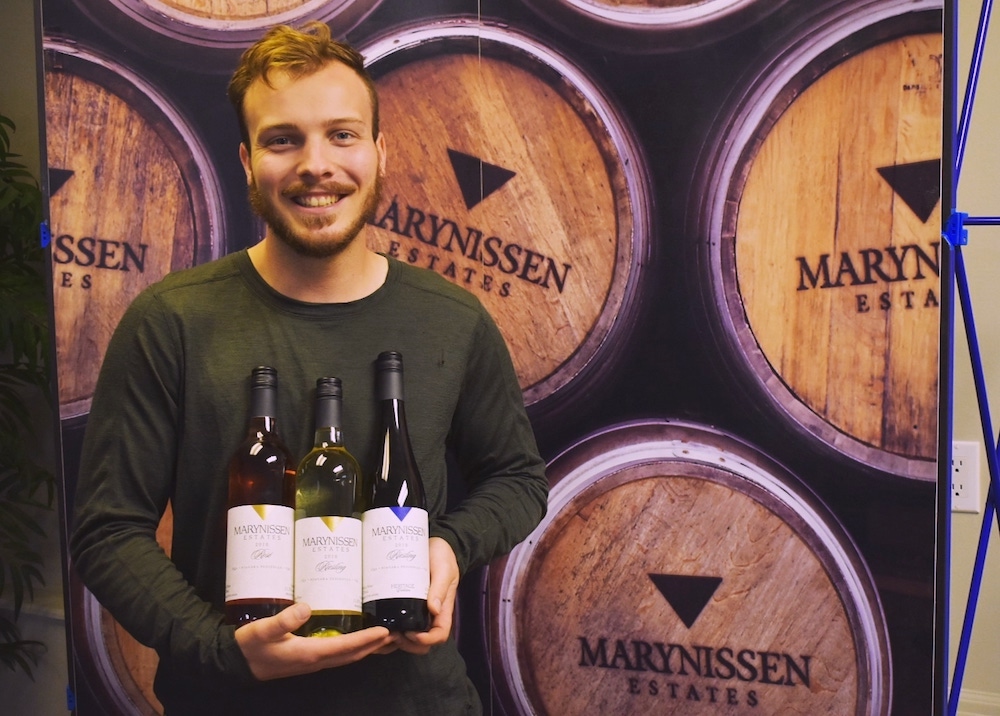
It wasn’t until the 2018 vintage that Lot 31 (now called Marynissen Vineyard) Cabernet Sauvignon was reborn. The new bottling is 100% sourced from the original Cabernet Sauvignon vineyard planted by Marynissen.
It’s bottled under the “Heritage Collection” tier, a mix of past/historic labels, such as Nanny’s Blend, that tie into the history and founding principles of the winery.
“Here we will be offering single vineyard wines that are focused on style and terroir, while incorporating varietals and old blends that people will recognize from previous vintages of Marynissen,” said McCurdy. “This will include Nanny’s Blend, an older label that was a big, plush wine named after John Marynissen’s wife Nanny, our single vineyard Cabernet Sauvignon from Lot 31, now referred to as the Marynissen Vineyard, and the Gewürztraminer.”
I recently tasted both the Cabernet Sauvignon and Nanny’s blend. Here’s what I liked:
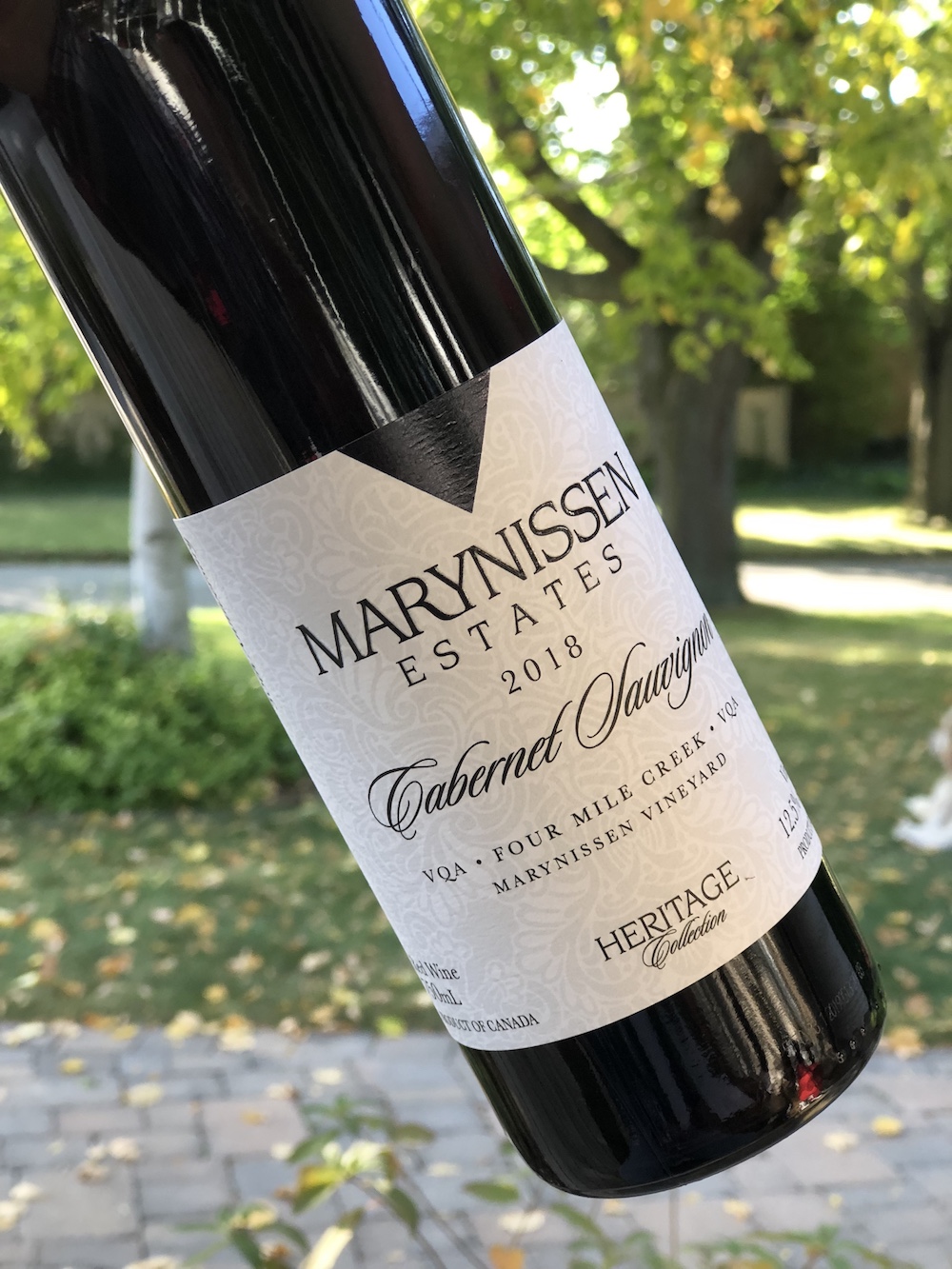
Marynissen Heritage Collection Marynissen Vineyard Cabernet Sauvignon 2018 ($30, 89 points) — This Cabernet Sauvignon marks the return of the single bottling of Cabernet Sauvignon from the original and historic Marynissen Vineyard with vines now 40 years old. It spent 18 months in mostly older French oak barrels. The wine was bottled primarily for wine club members but some are available for purchase at the winery along with 150 magnums. Going forward, the winery plans on making the Heritage Collection Cab Sauv a mainstay in the portfolio, solely from the home block of Cab Sauv. It’s not the ideal vintage to restart this Cabernet Sauvignon. It really needs a warmer vintage to fully ripen the grapes and give the wine the body it deserves, and 2018 wasn’t warm enough, especially for Cabernet Sauvignon in Niagara. But it does possess some wonderful fruit character and a sense of the past. It has a perfumed nose of blackberries, some brambly red berries and light spice notes. There’s more depth and concentration on the palate with layers of blackberries, cherries, cassis and touch of anise to go with medium tannins and light oak spices and a bright finish. It’s loaded with wonderful Cabernet flavours, but just lacking that concentration and depth that make this vineyard so special.
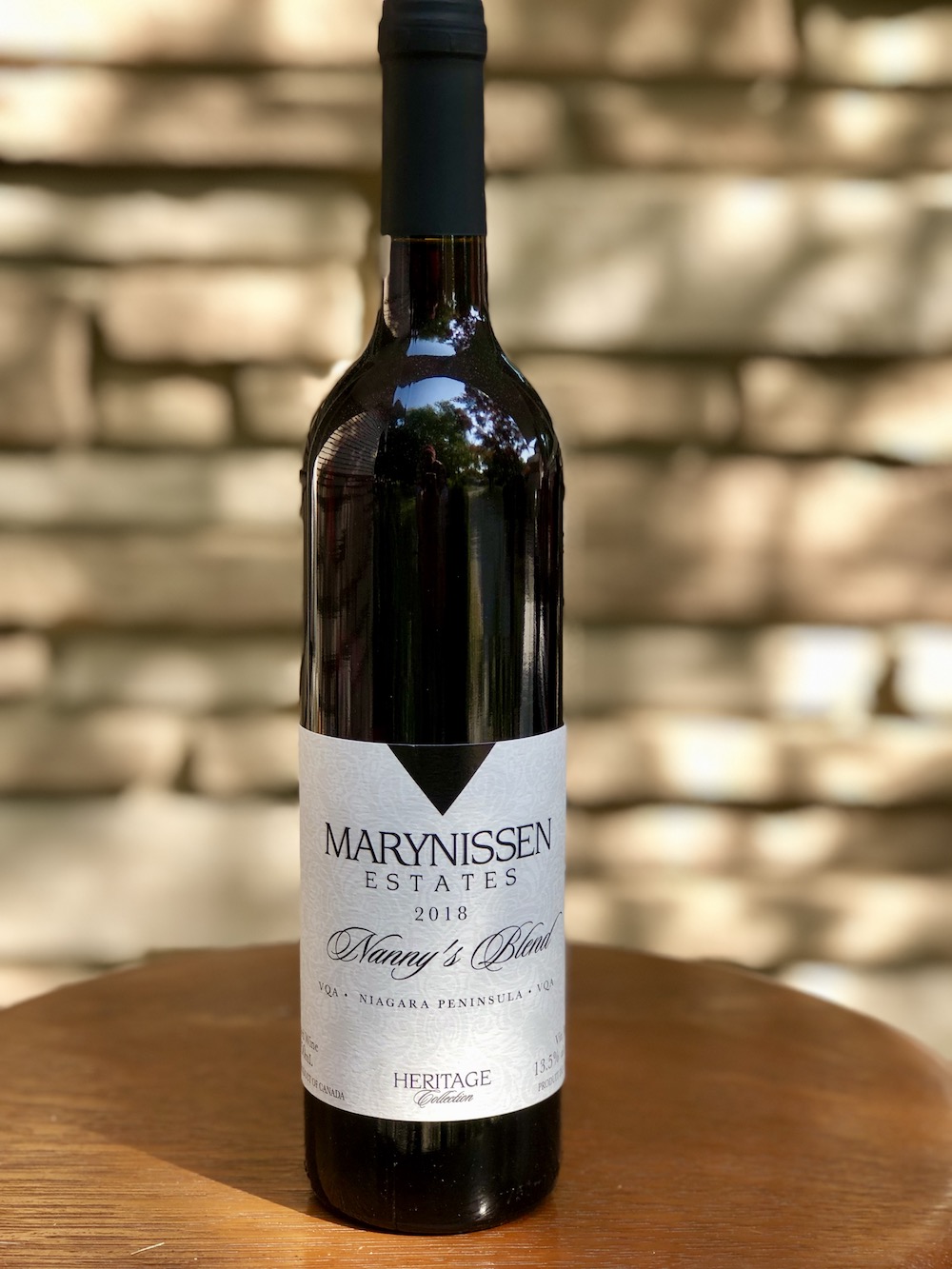
Marynissen Heritage Collection Nanny’s Blend 2018 ($28, 89 points) — This is a 60-25-15% Cabernet Sauvignon, Merlot, Cabernet Franc blend from the estate’s Marynissen Vineyard, with the Cab Franc from the Puglisi/Pondview Vineyard. It’s aged for 18 months in mostly older French and Hungarian oak barriques. The addition of Cabernet Franc and Merlot provides a bit more concentration for this Bordeaux varietal blend. The big fruity nose shows black cherries, blueberries, cassis, raspberries and spice notes. It has structure on the palate with a range of juicy fruit flavours — from brambly raspberries, and cherries and cassis to anise and oak spice notes — that all lead to a nicely finessed finish.
Fogolar Wines
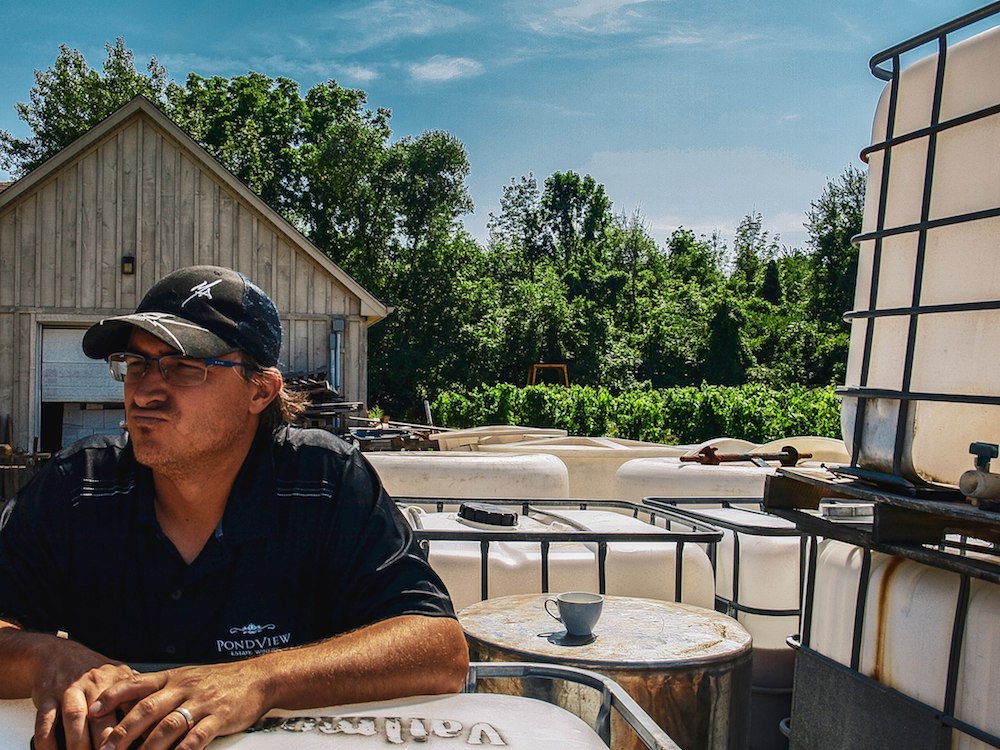
Marc Pistor, above, has been making wine professionally since 2005. The former assistant winemaker at Inniskillin Winery and head winemaker for Arterra Wines, Pistor started winemaking consultation in 2012 as well as creating and managing his own brand, Fogolar Wines, since 2013. Aside from making wine, Pistor also teaches courses in the Oenology and Viticulture program at Brock University.
Pistor’s focus is on crafting and celebrating distinct high quality VQA wines that are true to vintage, varietal, and vineyard. His virtual brand is produced and available at Ridgepoint Wines in Vineland and here at Collab Wines & Beverage.
I’m impressed by Pistor’s focus on grape varieties that do so well in Niagara. In the wines reviewed here, the winemaker excels at expressing different terroirs from trusted growers. This is a virtual winery that deserves your attention.
Here’s what I liked after tasting through a few of the wines now available:
The Rieslings
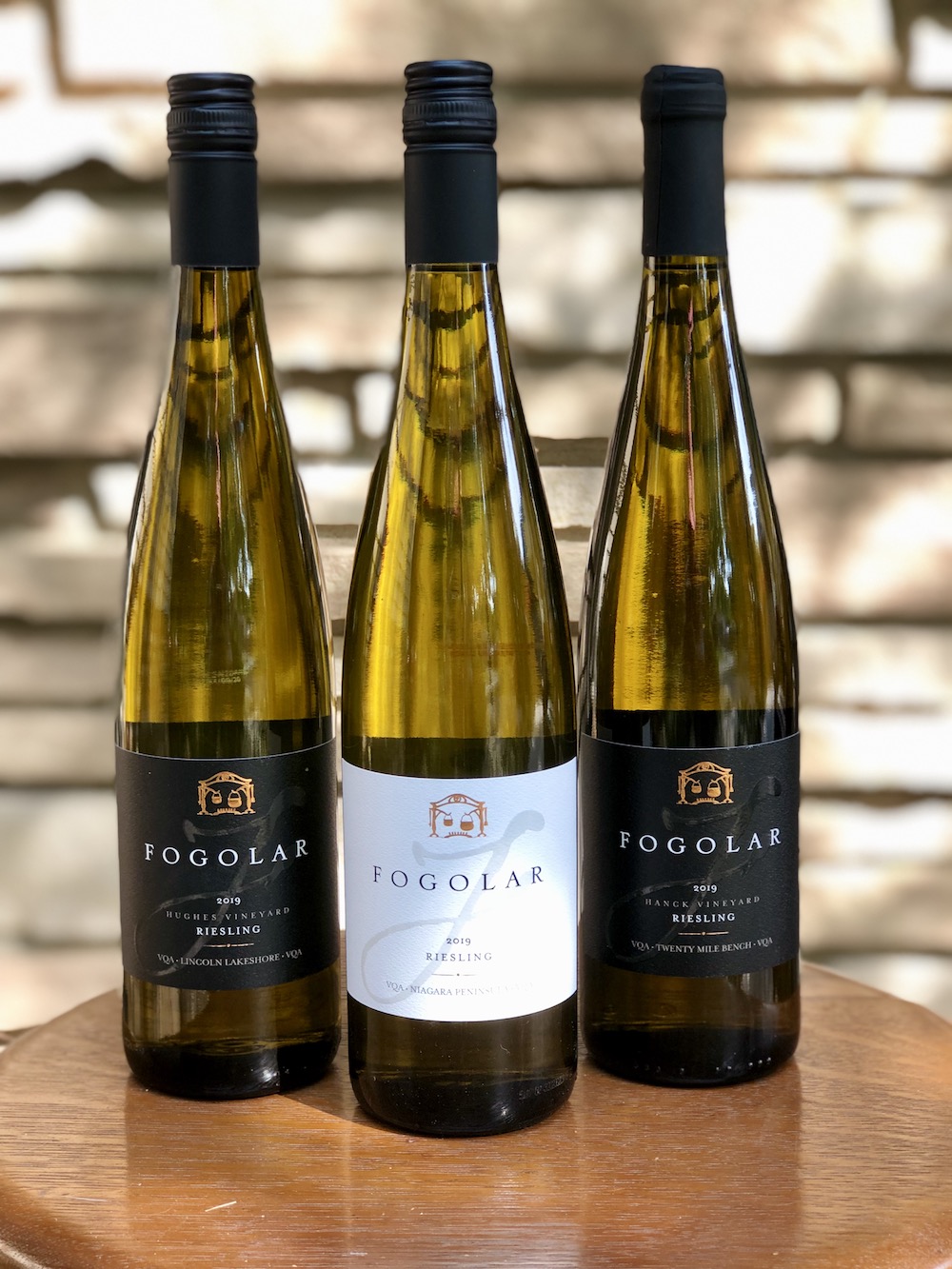
Fogolar Riesling 2019 ($14, 88 points) — A heck of a Riesling for the price, with a nose of white peach, lime, lemon blossom and crisp apple notes. It’s off-dry on the palate, but nicely balanced with bright acidity to go with ripe peach, nectarine, lime, grapefruit, honey and apple notes.
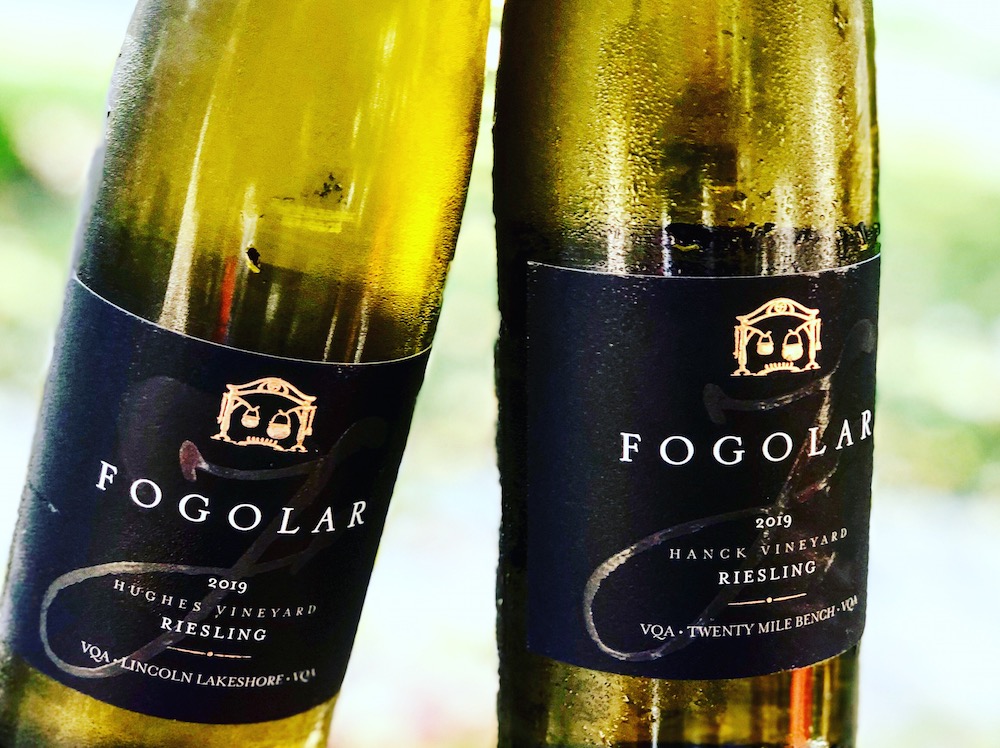
Fogolar Hanck Vineyard Riesling 2019 ($22, 92 points) — Sourced from the Hanck Vineyard on the Twenty Mile Bench, the fruit was machine picked for a bit of skin contact (about 2 hours). It has a sharp and jolting nose of fresh cut grapefruit, lime, lemon pith, wet stones, saline minerality and crisp apple notes. It’s perfectly dry and built in a lean style with bright notes of grapefruit, lime, tart apple and swaddled in acidity to keep it fresh and lively through the finish. It’s ecommended that you age this for a few years to let the petrol notes come through and tame the sharp edges.
Fogolar Hughes Vineyard Riesling 2019 ($22, 91 points) — A far different profile than the Hanck Vineyard version above. This is from the warmer Hughes Vineyard in the Lincoln Lakeshore sub-app with the fruit hand-picked and whole cluster pressed. Fermentation was stopped at 26 g/l of RS with only 9% abv. This is much more primary fruit laden with riper notes of peach, apple, citrus, nectarine and ginger. It’s juicy on the palate with sweet peach, Mandarin orange, ripe apple, lemon, ginger and nicely balanced between sweet and tart fruit. A really nice side-by-side comparison of Niagara Rieslings from both sides of the canal.
The Rosé
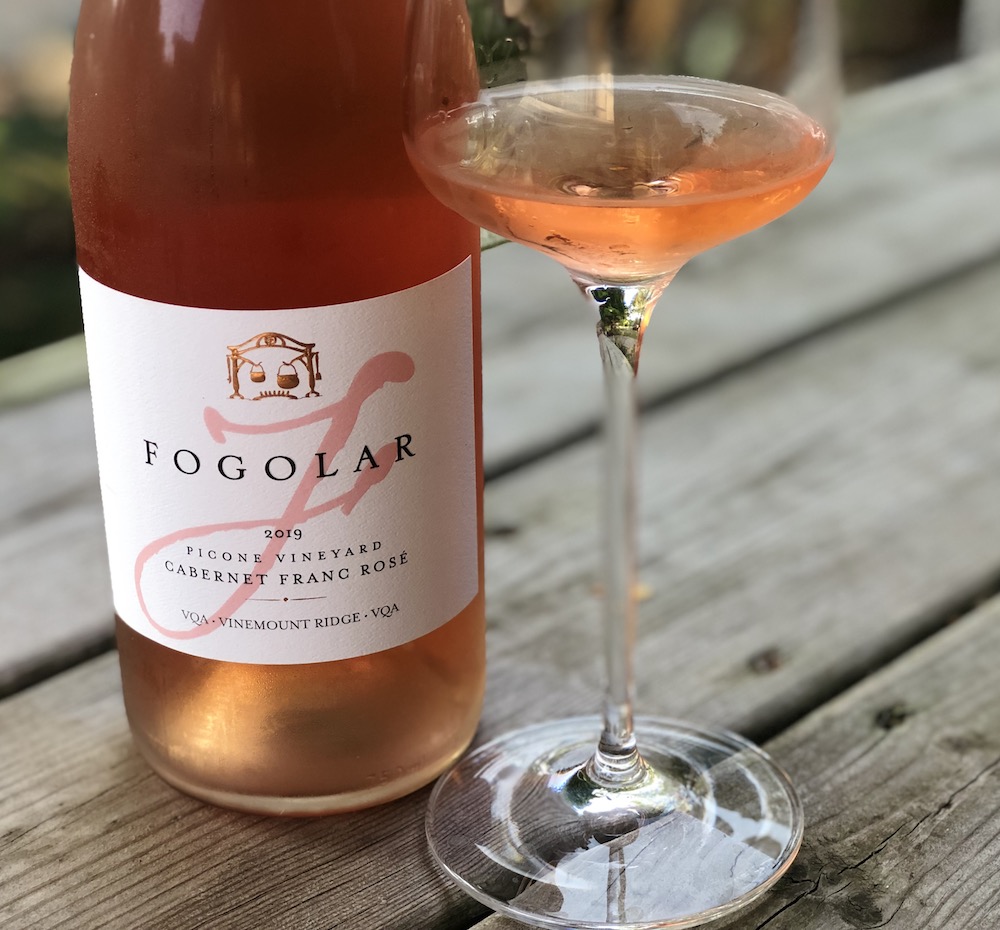
Fogolar Picone Vineyard Cabernet Franc Rosé 2019 ($22, 91 points) — This CF rosé in made in saignee method with minimal intervention. It shows a pretty copper colour in the glass with a nose crushed red berries, cranberries and rosehip tea. It shows some structure on the palate with light tannins and a touch of reduction to go with cherry/raspberry fruit, bramble, herbs, some cassis and a smoky note on the perfectly dry and finessed finish. A very different, more serious take, on rosé.
The Cabernet Francs
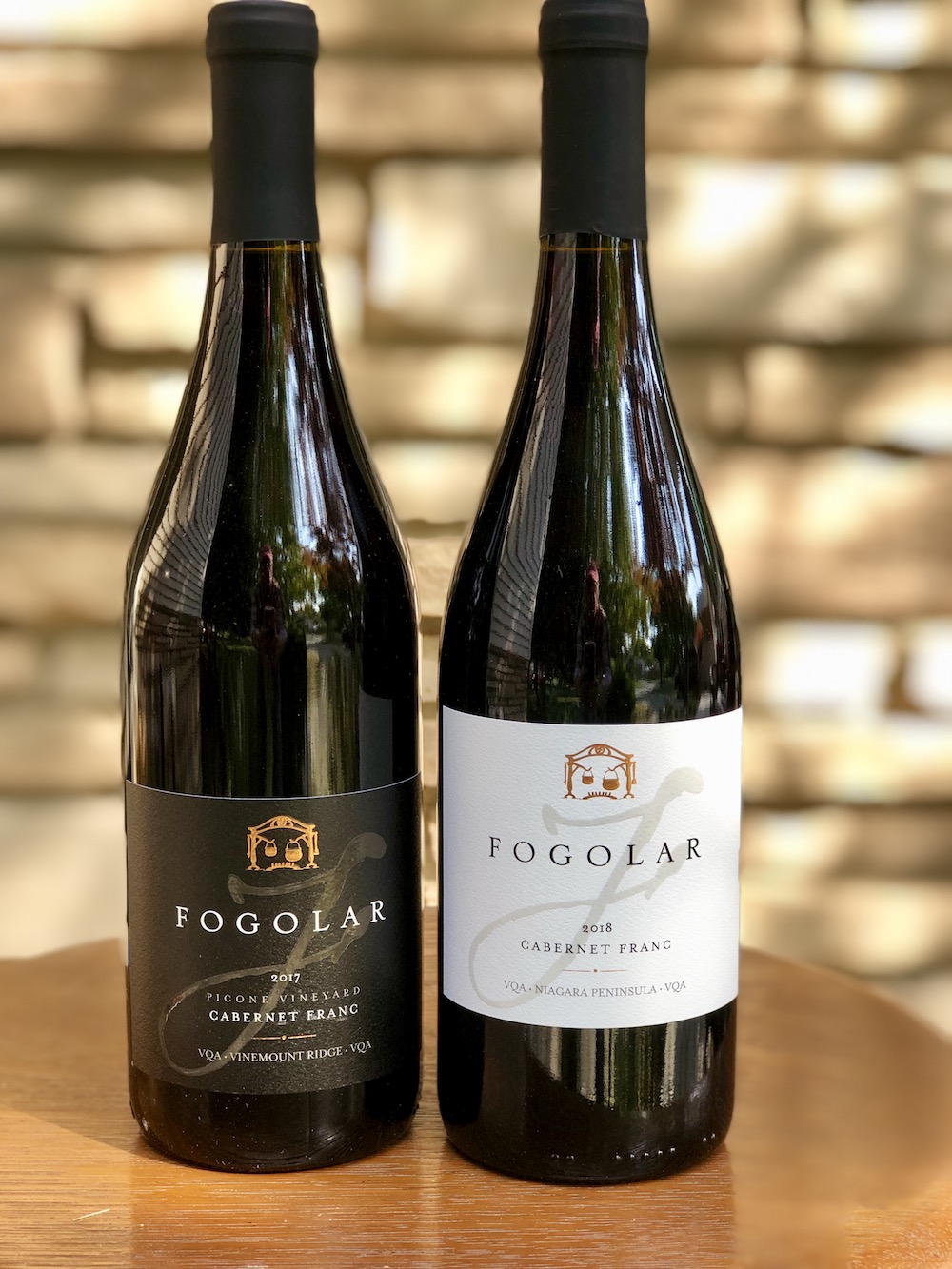
Fogolar Cabernet Franc 2018 ($22, 89 points) — This is Fogolar’s entry-level Cabernet Franc, aged 18 months in neutral French oak. It has a savoury and floral nose with earthy red berries, cassis, anise, dried tobacco and light spice notes. It’s tangy on the palate with mulled cherries, raspberries, licorice, ripe tannins, good persistence and highly approachable right now.
Fogolar Picone Vineyard Cabernet Franc 2017 ($44, 92 points) — All the fruit for this single-vineyard CF was hand-picked and left on the skins for 28 days and aged for 18 months in French oak (no new oak). This turns it up a notch or two with a nose of dark cherries, brambly raspberries, interesting wild herbs, savoury notes and elegant spice notes. It’s fresh and lively on the palate with layers of red berries, sage, currants, softish tannins and overt spice notes with medium+ acidity to keep if lively through the smooth finish.






Great description of the estate, grapes produced and final products, the amazing wines. It is very interesting to check the differences of tought on wine products between countries, even the strategy follows single grape variety wines and blends. Cabernet Sauvignon is also popular for the winemakers in Portugal, even with more than 300 grapes variety, which is interesting. Good article. Thanks for sharing the story and description.